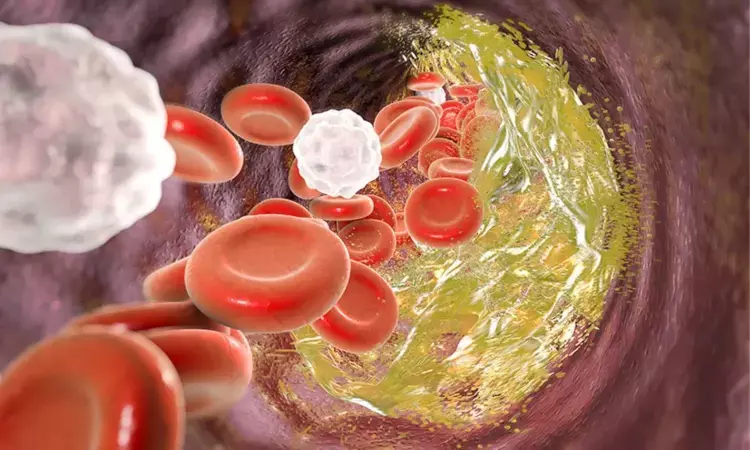- Home
- Medical news & Guidelines
- Anesthesiology
- Cardiology and CTVS
- Critical Care
- Dentistry
- Dermatology
- Diabetes and Endocrinology
- ENT
- Gastroenterology
- Medicine
- Nephrology
- Neurology
- Obstretics-Gynaecology
- Oncology
- Ophthalmology
- Orthopaedics
- Pediatrics-Neonatology
- Psychiatry
- Pulmonology
- Radiology
- Surgery
- Urology
- Laboratory Medicine
- Diet
- Nursing
- Paramedical
- Physiotherapy
- Health news
- Fact Check
- Bone Health Fact Check
- Brain Health Fact Check
- Cancer Related Fact Check
- Child Care Fact Check
- Dental and oral health fact check
- Diabetes and metabolic health fact check
- Diet and Nutrition Fact Check
- Eye and ENT Care Fact Check
- Fitness fact check
- Gut health fact check
- Heart health fact check
- Kidney health fact check
- Medical education fact check
- Men's health fact check
- Respiratory fact check
- Skin and hair care fact check
- Vaccine and Immunization fact check
- Women's health fact check
- AYUSH
- State News
- Andaman and Nicobar Islands
- Andhra Pradesh
- Arunachal Pradesh
- Assam
- Bihar
- Chandigarh
- Chattisgarh
- Dadra and Nagar Haveli
- Daman and Diu
- Delhi
- Goa
- Gujarat
- Haryana
- Himachal Pradesh
- Jammu & Kashmir
- Jharkhand
- Karnataka
- Kerala
- Ladakh
- Lakshadweep
- Madhya Pradesh
- Maharashtra
- Manipur
- Meghalaya
- Mizoram
- Nagaland
- Odisha
- Puducherry
- Punjab
- Rajasthan
- Sikkim
- Tamil Nadu
- Telangana
- Tripura
- Uttar Pradesh
- Uttrakhand
- West Bengal
- Medical Education
- Industry
Immature neutrophil, promising marker for plaque vulnerability and acute coronary syndrome

The study demonstrated strong associations of immature neutrophils with the incidence of acute coronary syndrome and coronary plaque vulnerability.
China: Abnormally increased CD10− immature neutrophils may be a promising marker of the incidence of acute coronary syndrome (ACS) and plaque vulnerability, findings from a recent study have revealed. The results appeared in the International Journal of Cardiology.
Neutrophils in peripheral blood are short-lived and constantly replenished from bone marrow hematopoietic progenitor cells. A high neutrophil-to-lymphocyte ratio is suggested to predict a poor prognosis of the acute coronary syndrome. However, there is no knowledge of the association of neutrophil subpopulation with plaque vulnerability and ACS incidence. Minying Wan, Tongji University School of Medicine, Shanghai, China, and colleagues, therefore, aimed to determine the association of circulating neutrophil diversity with the incidence of myocardial infarction (MI) and plaque vulnerability.
For this purpose, the researchers collected blood samples from 48 patients with unstable angina (UA), 33 healthy controls, and 31 with STEMI (ST-segment elevation myocardial infarction) at admission. Further evaluation of the morphology of coronary plaques in 48 patients with unstable angina was done by optical coherence tomography (OCT).
Circulating neutrophils were divided according to the expression of CD10 and CD101, and the maturation stages of neutrophils as mature neutrophils (CD101+CD10+), immature neutrophils (CD101+CD10−), and pre-neutrophils (CD101−CD10−).
Based on the study, the researchers reported the following findings:
- The number of pre-neutrophil was relatively low in blood and comparable among the three groups. Still, the absolute counts and percentage of CD10− immature neutrophils were higher in the peripheral blood of UA and STEMI patients than in healthy controls.
- Plasma myeloperoxidase's concentration was positively associated with the percentage of CD10− immature neutrophils.
- Unstable angina patients with thin-cap fibroatheroma (TCFA) observed by OCT had a higher proportion and more significant number of immature neutrophils than those without TCFA.
- The percentage of immature neutrophils also closely corresponded with plaque rupture and the feature of vulnerable plaque, including a larger lipid core and thinner fibrous cap, but did not associate with percent lumen stenosis.
"Another intriguing finding of our study is that a higher percentage of immature neutrophils is linked with vulnerable plaque, shown as thinner fibrous cap and larger lipid core, and even plaque rupture," the researchers wrote. "Plaque vulnerability rather than atheroma burden is the major cause of the acute coronary syndrome."
To conclude, an increased proportion of immature CD10− neutrophils could be a potent marker of plaque vulnerability and ACS incidence. Also, the proportion of CD10− immature neutrophils are positively associated with plasma MPO.
Reference:
Wan, M., Lu, Y., Mao, B., Yu, S., Ju, P., Hu, K., Xu, Y., Li, X., & Zhuang, J. (2023). Immature neutrophil is associated with coronary plaque vulnerability based on optical coherence tomography analysis. International Journal of Cardiology. https://doi.org/10.1016/j.ijcard.2023.01.004
Dr Kamal Kant Kohli-MBBS, DTCD- a chest specialist with more than 30 years of practice and a flair for writing clinical articles, Dr Kamal Kant Kohli joined Medical Dialogues as a Chief Editor of Medical News. Besides writing articles, as an editor, he proofreads and verifies all the medical content published on Medical Dialogues including those coming from journals, studies,medical conferences,guidelines etc. Email: drkohli@medicaldialogues.in. Contact no. 011-43720751


